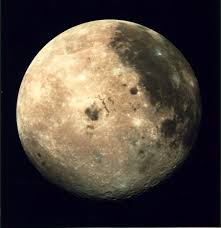Our Unit employs the 5Es of Lesson Design: 1) Engage; 2) Explore; 3) Explain; 4) Extend; and 5) Evaluate.
Further description of the Five Es follows:
1. Engage: In the stage Engage, the students first encounter and identify the instructional task. Here they make connections between past and present learning experiences, lay the organizational groundwork for the activities ahead and stimulate their involvement in the anticipation of these activities. Asking a question, defining a problem, showing a surprising event and acting out a problematic situation are all ways to engage the students and focus them on the instructional tasks. If we were to make an analogy to the world of marketing a product, at first we need to grab the customer's attention. We won't have their attention unless they have a need to buy the product. They may be unaware of a need, and in this case we are motivated to create a need.
2. Explore: In the Exploration stage the students have the opportunity to get directly involved with phenomena and materials. Involving themselves in these activities they develop a grounding of experience with the phenomenon. As they work together in teams, students build a base of common experience which assists them in the process of sharing and communicating. The teacher acts as a facilitator, providing materials and guiding the students' focus. The students' inquiry process drives the instruction during an exploration.
3. Explain: Explain is the point at which the learner begins to put the abstract experience through which she/he has gone /into a communicable form. Language provides motivation for sequencing events into a logical format. Communication occurs between peers, the facilitator, or within the learner himself. Working in groups, learners support each other's understanding as they articulate their observations, ideas, questions and hypotheses. Language provides a tool of communicable labels. These labels, applied to elements of abstract exploration, give the learner a means of sharing these explorations. Explanations from the facilitator can provide names that correspond to historical and standard language, for student findings and events. For example a child, through her exploration, may state they have noticed that a magnet has a tendency to "stick" to a certain metallic object. The facilitator, in her discussion with the child, might at this stage introduce terminology referring to "an attracting force". Introducing labels, after the child has had a direct experience, is far more meaningful than before that experience. The experiential base she has built offers the student an attachment place for the label. Common language enhances the sharing and communication between facilitator and students. The facilitator can determine levels of understanding and possible misconceptions. Created works such as writing, drawing, video, or tape recordings are communications that provide recorded evidence of the learner's development, progress and growth.
4. Extend: In Extend, the students expand on the concepts they have learned, make connections to other related concepts, and apply their understandings to the world around them. For example, while exploring light phenomena, a learner constructs an understanding of the path light travels through space. Examining a lamp post, she may notice that the shadow of the post changes its location as the day grows later. This observation can lead to further inquiry as to possible connections between the shadow's changing location and the changes in direction of the light source, the Sun. Applications to real world events, such as where to plant flowers so that they receive sunlight most of the day, or how to prop up a beach umbrella for shade from the Sun, are both extensions and applications of the concept that light travels in a straight path. These connections often lead to further inquiry and new understandings.
5. Evaluate: Evaluate, the fifth "E", is an on-going diagnostic process that allows the teacher to determine if the learner has attained understanding of concepts and knowledge. Evaluation and assessment can occur at all points along the continuum of the instructional process. Some of the tools that assist in this diagnostic process are: rubrics (quantified and prioritized outcome expectations) determined hand-in-hand with the lesson design, teacher observation structured by checklists, student interviews, portfolios designed with specific purposes, project and problem-based learning products, and embedded assessments. Concrete evidence of the learning proceed is most valuable in communications between students, teachers, parents and administrators. Displays of attainment and progress enhance understanding for all parties involved in the educational process, and can become jumping off points for further enrichment of the students' education. These evidences of learning serve to guide the teacher in further lesson planning and may signal the need for modification and change of direction. For example, if a teacher perceives clear evidence of misconception, then he/she can revisit the concept to enhance clearer understanding. If the students show profound interest in a branching direction of inquiry, the teacher can consider refocusing the investigation to take advantage of this high level of interest.
The site that follows provides a chart of 5E-aligned science activities:
http://www.mcps.k12.md.us/curriculum/science/instr/5Esactivities.htm


 Welcome to STS TEKS-NIQUES: Our TEKS-Aligned Blog For Creating Interdisciplinary Science, Math and History Units for K-12 Students. We are a consortium of teachers participating in the DREME Foundation Summer Science Camp. To know more about DREME, go to http://www.dremefoundation.org/.
Welcome to STS TEKS-NIQUES: Our TEKS-Aligned Blog For Creating Interdisciplinary Science, Math and History Units for K-12 Students. We are a consortium of teachers participating in the DREME Foundation Summer Science Camp. To know more about DREME, go to http://www.dremefoundation.org/.


